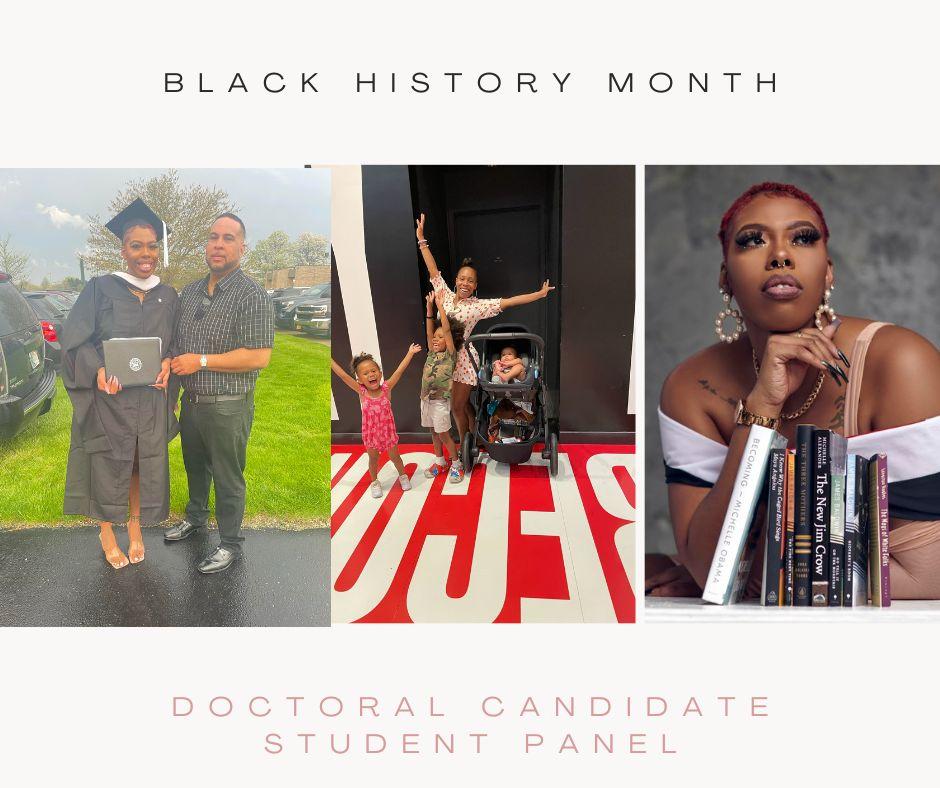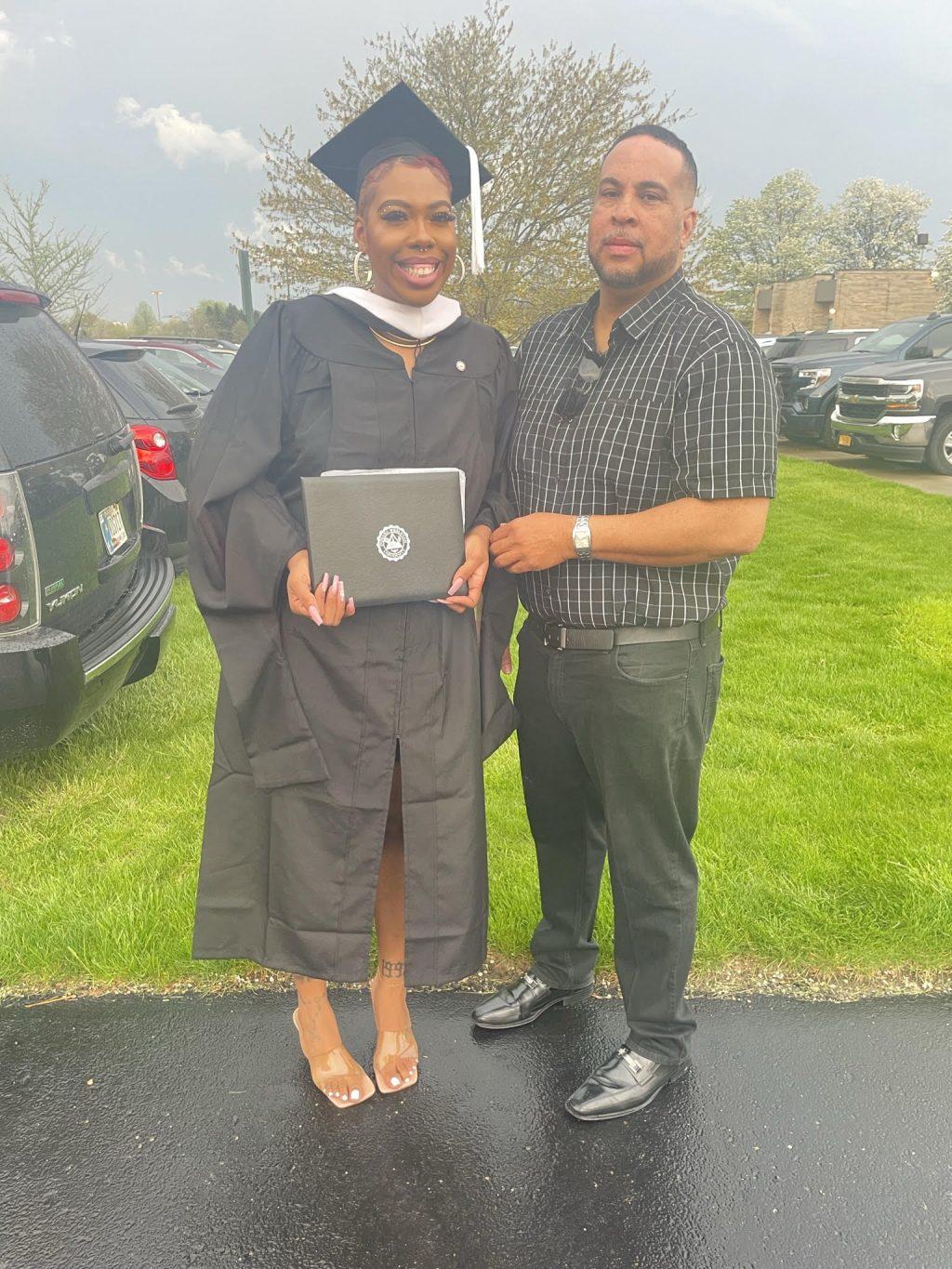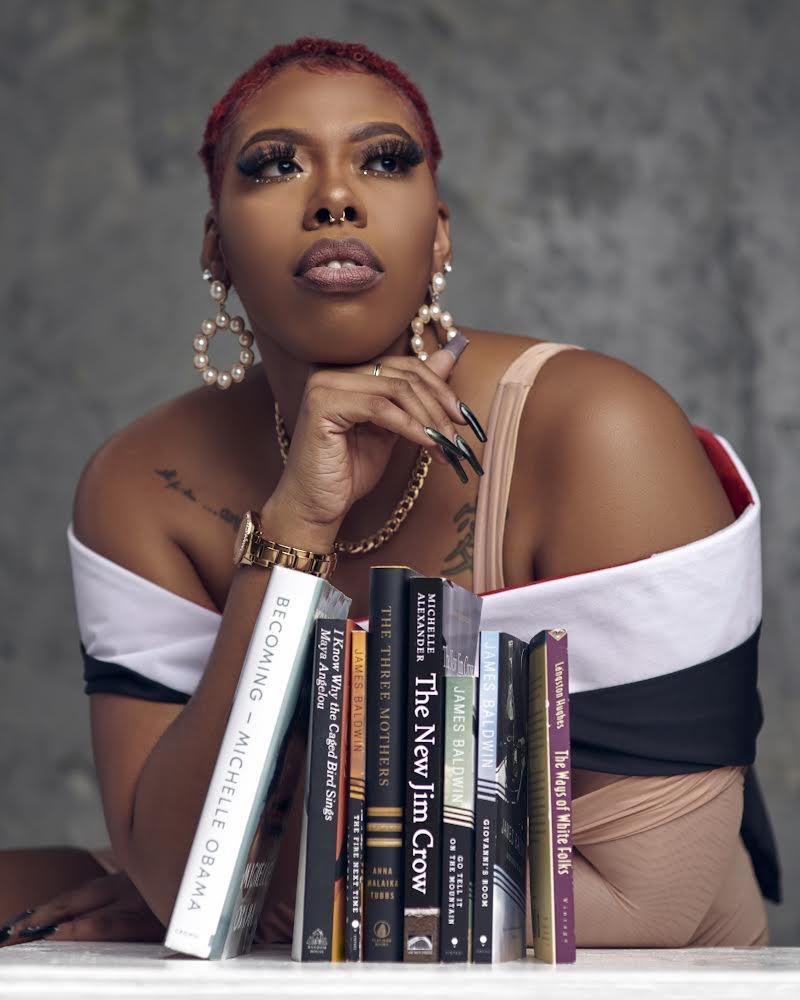
February sparks community — bringing people together to celebrate Black history to learn about the past that curates the present culture in the U.S. and to analyze the present that creates the future. A panel of six doctoral students from the Pepperdine Graduate School of Education and Psychology celebrated by discussing their own cultural and artistic backgrounds, connecting them to the concept of resistance, held over Zoom on Friday, Feb. 9.
“Happy Black History Month — as we celebrate the gifts and the greatness of what Black people have offered in their beings and their offerings to this country and to the world at large,” Sharletta Green said.
Sharletta Green, doctoral candidate and graduate assistant at the Center for Global Partnerships and Learning, moderated the virtual panel.
The panel included doctoral students Shelbi Chandler, Akadius Ashby, Michelle Watson, LaSchanda Johnson, Rev. Ali Holness-Roland and Celese Heron Alexander.
The panel discussion connected the history of Black resistance in America to how the country characterizes resistance today.
The Center for Global Partnerships and Learning hosts cultural events each month to celebrate the various cultures that make up the U.S., Green said. They offer certificate programs — including the new Diversity, Equity and Inclusion certificate program — and host a podcast called ‘Elevating Voices.’
“We are dedicated to elevating the voices of all people,” Green said.
Considering the climate of the culture today and the role that the Harlem Renaissance played in shaping a generation of leaders, the Center chose to explore the topic “Art as a Form of Resistance,” Green said. The topic examines how the generation of leaders shaped by the Harlem Renaissance changed the narrative behind what Black life, Black love, Black family and Black joy is today and what it was at that time.
Meanings of Resistance
The panelists discussed how celebrations of Black history evolved throughout U.S. history and the meanings of resistance today. Johnson said any celebration of Black history is an act of resistance.
“It confronts the challenges the systemic erasure and marginalizations of Black contributions to society — it’s an assertion of identity, dignity and impact of Black people on the world,” Johnson said.
By uplifting the narratives that have been systematically suppressed, celebrations of Black history rewrite a more inclusive and accurate account of history, Johnson said.
Celebration of Black history involves gaining knowledge and learning about the various contributions shaping Black culture, Watson said. She recalls a dancer and civil rights activist who participated in the Harlem Renaissance and spoke out against racial injustices in the post-World War II era — Josephine Baker, who gives her a sense of pride in this modern day.

Holness-Roland said now that she is a mother, she finds teaching her children Black history the way her parents taught her is an act of resistance.
“Just like my mother and my father made sure I knew who I was, it’s important that they [her children] know how great they are and the greatness that they come from,” Holness-Roland said.
Chandler said her father was instrumental in demonstrating what resistance is.
“My father did a great job making sure we knew who the Black man was, who the white man was and the veil behind it,” Chandler said. “My father said resistance is showing all of you — every side of you.”

Heron Alexander said Black History Month is not just in February — there is always a point in learning, expanding and uplifting positive narratives.
“Understanding the ground that laid before and respecting that ground to be able to build on it and that expectation of your own greatness pushes the resistance,” Heron Alexander said.
Forms of resistance include outwardly celebrating Black history, expressing oneself and showing one’s environment who one is as a Black person, the panelists said.
An overarching theme many of the panelists highlighted is the idea of revealing one’s Blackness to the country and the world — standing confidently in one’s Black identity.
Art Forms of Resistance
Green discussed the art forms of resistance with cinema as an example.
“Cinema is able to help us envision the things we missed out on,” Green said.
When thinking of art forms of resistance, Holness-Roland said her mind goes to fashion, style, hair and language. She thinks of the music she dances to with her daughters — something she feels deeply through her whole body.
“When I hear certain music from Nina Simone and Baltimore, I find myself dancing in the kitchen with my kids,” Holness-Roland said.
Heron Alexander said he makes sure there is representation throughout the whole house by means of visual art — cultural paintings, different prints and sculptures.
What moves Watson the most is anything that captures self-expression with a statement — the dancing and the words of activists Josephine Baker and Alvin Ailey or the song “This is America” by Childish Gambino — anything that moves her in the moment, she said.
“Resistance is whatever speaks the loudest and makes a statement,” Watson said.
Resistance through music is grand because it has the power to send a message that makes a difference, the panelists said.
“Music is the universal language that has the ability to change your mood — speak to your soul,” Ashby said.
Identity
Modern hip-hop reveals that there is an identity crisis at present because hip-hop did not always come with a negative connotation, Green said.
“Hip-hop did not start out as being derogatory — it started out telling the story about what it meant to live in the neighborhood and what it was like living in a place where you were not seen,” Green said. “But also celebrating what was so amazing about being Black.”
Chandler finds today’s world with immediate access to a variety of content creation prompts many Black people to celebrate aspects of Black culture in hiding and neglect to show their true Blackness publicly, she said.
The panelists said they find there is a lack of celebrating Blackness in artwork today.
Chandler mentioned a powerful moment when poet Nikki Giovanni interviewed James Baldwin, African American writer and activist in 1971, discussing Black manhood, white racism and the responsibility to teach. Anyone can stream the interview, taped in London on WNET’s “SOUL!,” according to ALL ARTS TV on YouTube.
“You look into the mirror, see who you are and you don’t accept it, so you turn away and choose someone else,” Baldwin said to Giovanni. “I’m leaning on your generation.”
Chandler interpreted this message as Baldwin leaning on her generation to find their identity and stand confidently in it, she said.

Chandler said people ask her why she does not use TikTok and other social media platforms like many others today. She chooses to lead her life focusing on her studies rather than the trendy content creation of today’s world.
When a Black person sees an aspect of white culture as cool on social media, they can immediately internalize that, Chandler said. She admires that there is a mix of culture on social media but believes it should not be idealized at the expense of one’s Blackness.
“We love interracial media, but know who you are,” Chandler said.
Content creation has caused Black people today to lose focus and turn away from their true identity. The questioning of identity impacts modern art, the panelists said.
“We’re still finding our identity, and we’re still walking away from that mirror — and I want us to walk closely,” Chandler said.
___________________
Follow the Graphic on X: @PeppGraphic
Contact Samantha Wareing via email: samantha.wareing@pepperdine.edu or by Instagram: @samanthawareing

